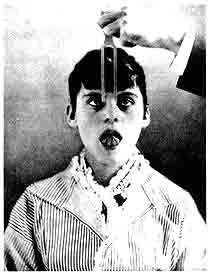Tuners for Guitars
|
You don’t have to play the guitar in tune as guitarists have shown! Some guitarists have changed tuning a guitar into creating the melody’s for their music, while others tune up only when they feel it’s needed! |
|||
 |
But to play the guitar you need to be able to know how to tune it. Well, you could just play on one string but you probably want to progress beyond that. Tuners for guitars are pretty useful when you want to play the guitar in a hurry. Why it's a good idea to learn how to play the guitar in tune. The open stringed notes on a guitar are spaced in such a way to allow the guitarist to be able to play the guitar with ease. The note structure means the maximum number of notes and scales can be played with the |
||
|
minimum effort on your fret board hand. This is helpful because when you learn to play the guitar it helps to remember chords as shapes. A chord of "D" looks like a triangle and a chord of "C" like a diagonal line. Tuning the guitar makes playing the guitar much easier! |
|||
Tuning a guitar with itself - no tuner neededTuning a guitar is usually done by using the notes E, A, D, G, B, E with the "A" being pitched at 440 Hz. To play the guitar you can tune it to itself. The lowest note is plucked at the 5th fret and the pitch of the note is changed by turning the tuning peg or machine head until the pitch is matched. This works for all strings except the string "B" where the "G" below is plucked at the 4th fret. As long as you and any other musicians are tuned from one guitar you will be in tune with each other. If you try to play the guitar with recorded music or musicians without a guitar tuner this pitch it will not work because you need a standardised reference pitch. How do we get the original pitch for tuning a guitar?To play the guitar in tune with other instruments it is important for them to have a common pitch. The standard for the open "A" string on guitars is 440 hertz. A hertz (Hz) is a measurement of vibration or cycles a second. In this case we use “A” = 440 cycles a second. When you tune the guitar peg up, its frequency increases causing the note to have a higher pitch. Tuning down has the opposite effect and decreases the vibrations and also the pitch. A standard of 440 Hz is required for note "A". (This is the 5th or second largest string). Types of tuners for guitarsThis section covers the different types of tuners for guitars that are available. These tuners for guitars are either ones you use your ear to tune your guitar or the type that have a visual read out. Tuners for guitars with visual pitch correction are nearly always digital guitar tuners. Pitchpipe tuners for guitarsThese are 6 reeded tubes that play the pitch of each guitar string. The lowest priced tuners for guitars that can be carried in a pocket. Pitch pipes need no power supply so they will never run out of power and make a good choice for beginners as you use your ears to reference notes against the pitch pipes. Tuning fork tuners for guitarsTuning forks prongs vibrate at the correct frequency. If you strike the fork and place the single pointed end on your guitar body the sound will resonate and amplify. This sounds great, especially on acoustic guitars and makes a pure note as the pitch fork tries to play the guitar by itself. However you can only one note from a tuning fork so they are for frequency reference. I recommend an "A" tuning fork as this seems the easiest to use. |
|||
Online tuners for guitarsTry the one below. You click the switch underneath the note
you want and it plays the note. To stop the note, click the note again and move on
to the next string. This free guitar tuner is
available each time you are online.
These types of tuners for guitars rely on your ears to match the pitch. The only disadvantage is you have to have a computer on to play the guitar. Digital tuners for guitarsDigital tuners for guitars are probably the most widely used to play the guitar in the correct pitch. It has a screen or light system that shows you whether the notes are sharp or flat. Digital tuners for guitars are quick and accurate. They are sometimes fitted with microphones so you can tune your acoustic guitar as well. Alternate tunings for guitarThere are guitar tunings you can use to play the guitar outside of the standard open tuning. These tunings don’t refer to the standard pitches and note separations for guitars. They fall into 2 main areas. The first is: Pitches where the guitar tunings are lowered or raised sequentially. By that I mean if the note "E" is dropped or raised by a semitone the notes "A,D,G,B,E will also be raised or lowered by the same amount. Jimi Hendrix and Duane Eddy used these sometimes. The seond is: The strings are all or partly tuned differently. One of the better known tunings is DADGAD. This involves tuning down both the E notes and the B note to D and A whilst the A, D and G notes remain the same. Examples of DADGAD can be heard on folk rock and Led
Zeppelin albums. Please keep this page bookmarked or subscribe for further updates.
|
|||

